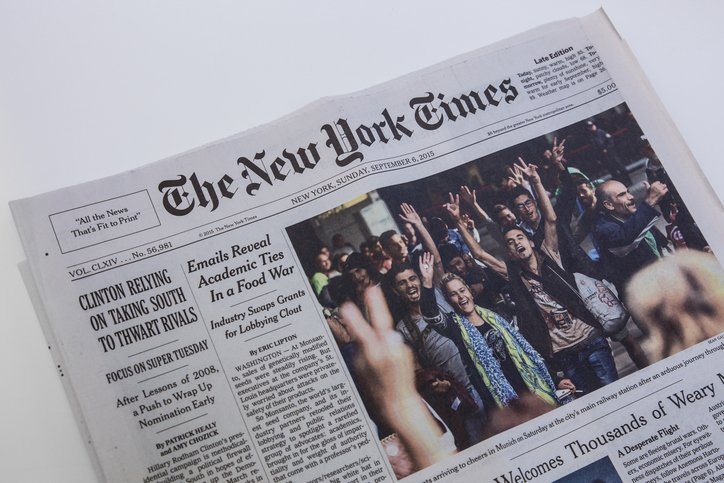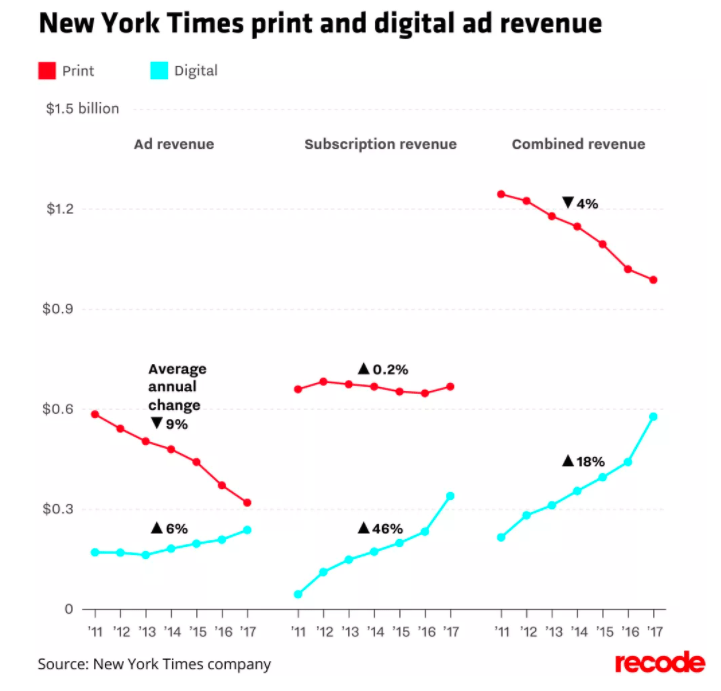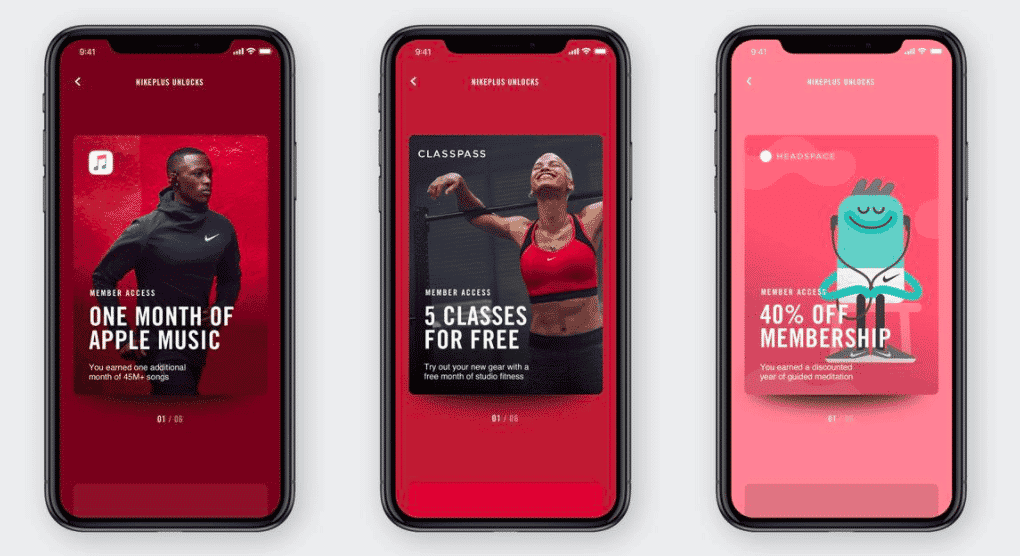Article
New York Times Grows Like a Tech Company; Nike Makes NikePlus More Personal; Retailers Look to Omnichannel for Personalization
February 27, 2018

The latest earnings news from the New York Times shows that the publication may have found the key to survival despite the continuing decline of ad dollars. We’ll look at how reader engagement and digital subscriptions drove the kind of impressive growth rate often associated with tech companies. We’re also going to explore retailers’ plans to unite commerce and personalization, as well as Nike’s personalized loyalty program.
The New York Times is Growing Like a Silicon Valley Giant
With an average annual growth rate of 30% since it implemented its paywall in 2011, The New York Times is growing like a Silicon Valley behemoth. This level of revenue growth is on par with that of Google (23%) and Facebook (46%). Both businesses obviously dwarf The Times in size. Still, it’s remarkable that the 166-year-old company has managed to transition into a nimble, profitable, digitally-focused operation.

In 2017, digital subscription revenue at the Times grew 46%, to $340 million. In the fourth quarter alone, digital subscription revenue increased 51% to $96 million. These gains helped the company achieve a total 2017 revenue of $1.7 billion.
Chief Executive Mark Thompson noted that the publication has achieved “continued strong retention” of 2016’s co-called Trump Bump subscribers, who are renewing at higher-than-typical rates.
“Our focus on establishing close and enduring relationships with paying, deeply engaged users,” he said. “The long-range revenues which flow from those relationships is the best way of building a successful and sustainable news business.”
NikePlus Aims to Use Personalization to Unlock Greater Customer Engagement
Nike has partnered with Apple Music, ClassPass and Headspace to bring new perks — or, as the company calls them, Unlocks — to NikePlus members when they complete workouts or purchase a Nike product. Nike is focused on growing engagement through the increased spectrum and frequency of Unlock perks.
Completed workouts, recorded through the Nike Run Club or Nike Training Club apps, will grant access to:
- Workout playlists on Apple Music
- Mindfulness audio for runs from Headspace
- Free ClassPass credits

Of course, members can also get these perks through purchases. For example, buying an eligible sports bra through the app gives you access to courtside NBA tickets. Members also have access to exclusive products, such as sneakers in special colors, and early access to new product “drops,” which are big moments in the sneakerhead world. A new Birth Month promotion includes both discounts and post-purchase gifts, such as a one-month ClassPass subscription.
Ultimately, Nike hopes to speed up the feedback loop to achieve even greater personalization. Its message to members is, the more they use the apps, the better Nike can tailor their experiences.
Retailers Plans for 2018: Unified Commerce Platforms and Personalization
Customers want personalization at every step of their journey, whether in-store or online. To bridge the gap between personalized online and in-store experiences, 81% of retailers say they will deploy a unified commerce platform by 2020, according to a new survey from Boston Research Partners (BRP).
BRP defines unified commerce — which sounds to us an awful lot like omnichannel commerce — as putting the customer experience first by creating a single platform from previously-siloed retail operations. Examples include inventory visibility and delivery options. With a single platform, retailers will have access to each consumer touch point, which provides a foundation for personalization across the entire customer journey. According to the survey, retailers’ three top customer engagement strategies for 2018 include:
- Customer identification/personalization of the customer experience (62%)
- Alignment of the customer experience across mobile apps and the web (54%)
- Empowering associates with mobile tools (51%)
“Customers appreciate personalized offers and recommendations when shopping online or via mobile,” says BRP Senior Vice President Perry Kramer. “Now they expect the same personalization, or better, when they shop in a store.”
The State of Brand Loyalty in the U.S. in 2023
Related



